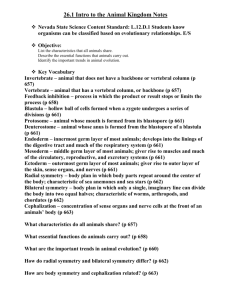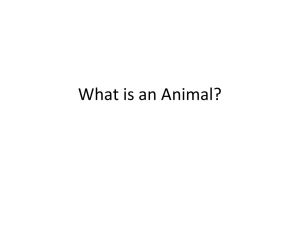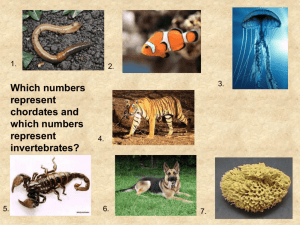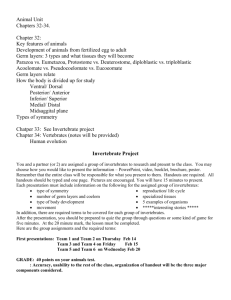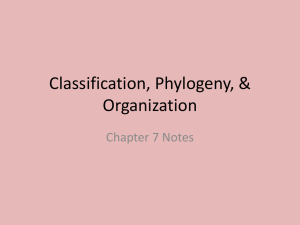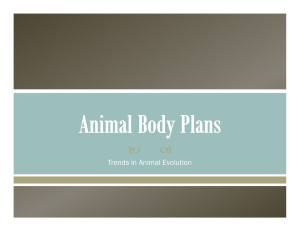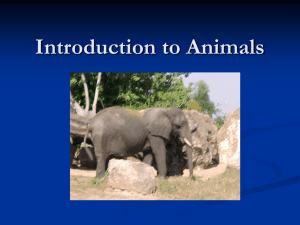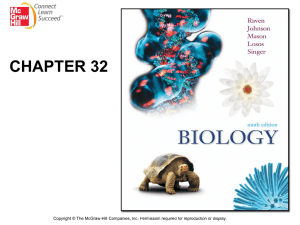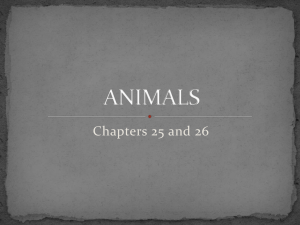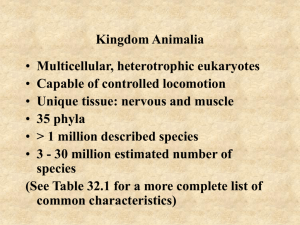25.2_Animal_Body_Plans_and_Evolution
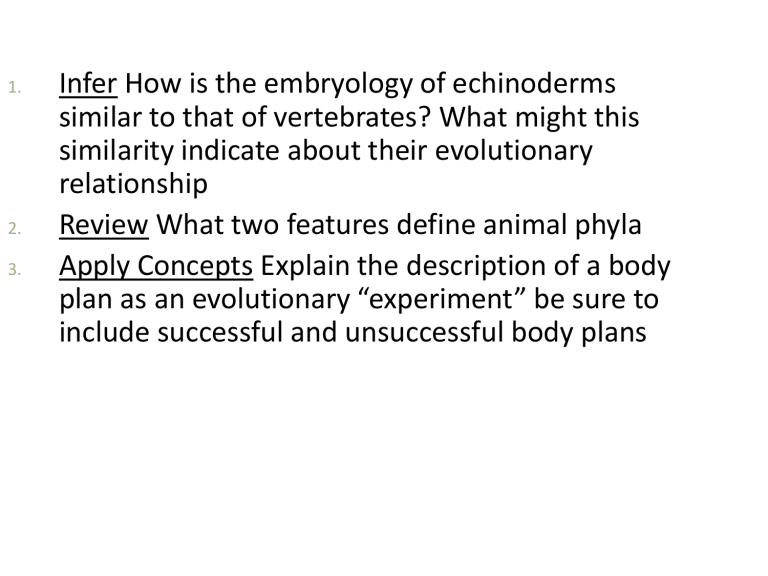
2.
3.
1.
Infer How is the embryology of echinoderms similar to that of vertebrates? What might this similarity indicate about their evolutionary relationship
Review What two features define animal phyla
Apply Concepts Explain the description of a body plan as an evolutionary “experiment” be sure to include successful and unsuccessful body plans
CH 25 INTRODUCTION TO ANIMALS
25.2 Animal Body Plans and Evolution
Features of Body Plans
Levels of organization
Body symmetry
Differentiation of germ layers
Formation of body cavities
Patterns of embryological development, segmentation, cephalization, and limb formation.
Levels of Organization
Body Symmetry
Radial symmetry
Body parts extend from a central point
Many lines of symmetry.
Body Symmetry
Bilateral symmetry
Single imaginary plane divides the body into left and right sides that are mirror images of one another
Have a definite front
(anterior) and a back
(posterior)
Have an upper (dorsal), and a lower (ventral).
Differentiation of Germ Layers
Endoderm
innermost germ layer
Develops into lining of the digestive tract and much of the respiratory system
Mesoderm
Middle germ layer
Gives rise to muscles and much of the circulatory, reproductive, and excretory organ systems.
Differentiation of Germ Layers
Ectoderm
Outermost germ layer
Produces sense organs, nerves, and the outer layer of the skin.
Formation of a Body Cavity
Body cavity
Fluid-filled space between the digestive tract and body wall
Provides a space in which internal organs can be suspended and grow.
Coelomate
True coelom
Body cavity that develops within the mesoderm and is completely lined with tissue derived from mesoderm.
Acoelomates
Lack a body cavity altogether.
Pesudocoelomate
Pseudocoelom
Only partially lined with mesoderm.
Patterns of Embryological Development
Zygote
Fertilized egg, sexual reproduction
Blastula
Hollow ball of cells
Develops from zygote.
Blastula develops
Folds in on itself, forms an elongated structure with a tube that runs from one end to the other
Tube becomes the digestive tract.
Protostomes
Blastopore becomes the mouth
Anus forms from a second opening at the opposite end of the tube
Most invertebrates.
Deuterostomes
Blastopore becomes the anus
Mouth is formed from a second opening that develops
Chordates and echinoderms.
Segmentation: Repeating Parts
Typically have at least some internal and external body parts that repeat on each side of the body.
Cephalization: Getting a Head
Cephalization
Concentration of sense organs and nerve cells at their anterior end
Formed by the fusion of internal and external parts that concentrate sense organs and nerve cells in the head.
Limb Formation: Legs, Flippers, and Wings
Segmented, bilaterally symmetrical animals typically have external appendages on both sides of the body.
Animal phyla are typically defined according to adult body plans and patterns of embryological development.
The Cladogram of Animals
Indicates the sequence in which important body plan features evolved.
Complicated body systems of vertebrates aren’t necessarily better than the “simpler” systems of invertebrates.
1.
2.
3.
Which animal takes the most time to reach the differentiation stage and which takes the least time
How much longer does it take a rhesus monkey zygote to reach the 4 cell stage than a chicken zygote
Which developmental stage would you expect to occur first- formation of the coelom or the blastulaexplain
